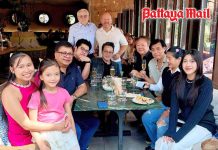 In these difficult times coin shows and auctions are often postponed or cancelled. Some coin auctions are successfully conducted behind closed doors.
In these difficult times coin shows and auctions are often postponed or cancelled. Some coin auctions are successfully conducted behind closed doors.
In 1978, when I started with coin and banknote auctions in Oslo, Norway, there were three options to bid. Mail bids, telephone bids and personally attending the auction. Today professional auction companies have the three mentioned options, but in addition they have Internet Absentee or Proxy Bidding, Email, Fax and iBid Live bidding.
My favourite is iBid Live Bidding where you can sit in the comfort of your home, office or any other place and see what is happening in the auction room. To put in your bid, you press on the bidding sign or add the amount of your bid. One can also use mobile devices such smart phones or tablets.
Today ‘Live Bidding’ in person is difficult because of the coronavirus pandemic. The auction companies have to follow directives given by local mandates at the time of the auction and for many it is difficult or impossible to travel.
Attending auctions in person is very effective, not only for the bidding, but handing in your consignments, meeting colleagues and collectors with the same collection interests and getting valuable information from other professionals.
Even though many auction companies today have the coins, medals and banknotes graded by a third party grading company, traders find it of great importance to see the actual object. Many coin enthusiasts are eagerly looking forward to being able to attend auctions in person again.
Stack’s Bowers and Ponterio conducted an auction sale in Hong Kong on 4 -7 May 2020. The company is well established in Asia for the past 10 years and have a very good reputation. They have professional bidding options and listed almost 6000 objects for the sale in two gigantic catalogues, one for coins and medals and the other for banknotes.
Nirat Lertchitvikul, Director of Asian Operation, a Thai citizen, has worked with Stack’s Bowers and Ponterio in Hong Kong since the day the company established in Asia. He said that even though the world was suffering an economic crisis due to the coronavirus pandemic, the coin and banknote market is still thriving, even if auctions had to be conducted behind closed doors.
In the four-day sale, Stack’s Bowers and Ponterio sales amounted to US$13,265,604 (THB about 423,438,000). The sale of coins and medals amounted to US$12,287,832 and the banknotes sales were US$977,772. This is the second largest coin and banknote auction conducted in Asia. In August 2011 Stack’s Bowers sold coins and banknotes for more than US$17,000,000.

The most expensive coin in the sale was a Chinese Silver Dollar Pattern Year 18 (1929) produced by the Rome Mint. This magnificent and extremely rare pattern was estimated at US$90,000 to US$120,000 and sold for US$252,000.
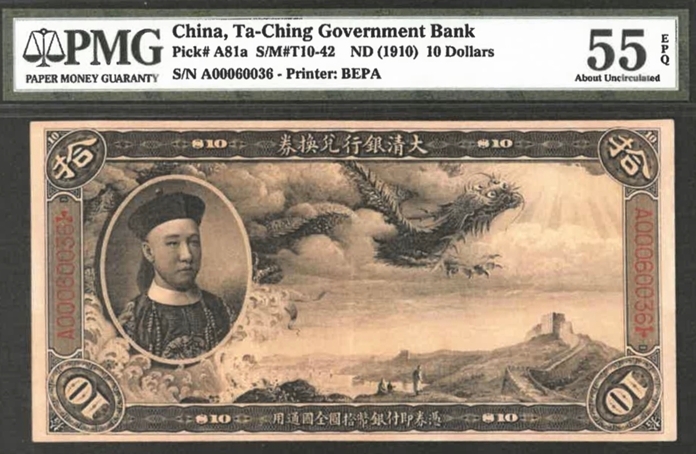

Several banknotes were sold for record prices. The most expensive was a China-Empire, Ta-Ching Government Bank, 10 Dollar, No Date (1910). Estimation was US$20,000 to US$25,000 and sold for US$60,000.
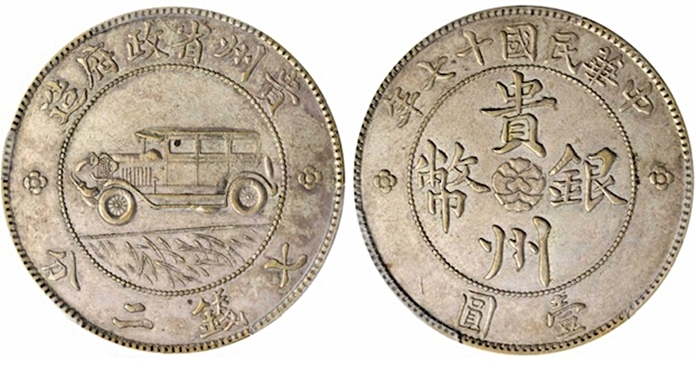
A China, Kweichow Auto Dollar, Year 17 (1928) in high grade sold for US$120,000. The estimation was US$50,000 to US$70,000. The coin was produced to commemorate the completion of the Kweichow (Guizhou) Provincial Highway and reportedly features Governor Zhou Xicheng’s personal automobile. It is said that the automobile was imported from the United States and arrived before the Highway was completed. On arrival to China it was dissembled, carried on foot over the mountains to Kweichow, and reassembled so Zhou was able to drive it around. Today the interest of collecting coins depicting cars is popular. The most reasonable Auto Dollar in the auction was sold for US$16,800.
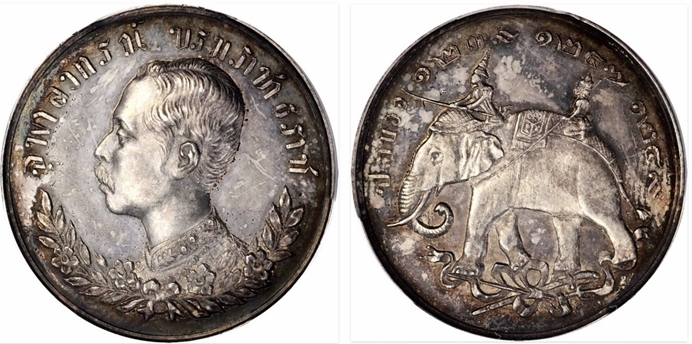
A very popular Thai Medal was the most expensive of the Thai materials. The estimation was US$7,000 to US$10,000, and the buyer had to pay US$38,400, more than 1.2 million baht. The Haw Campaign Silver Medal was produced in CS 1246 (1884) during the reign of King Chulalongkorn, Rama V.
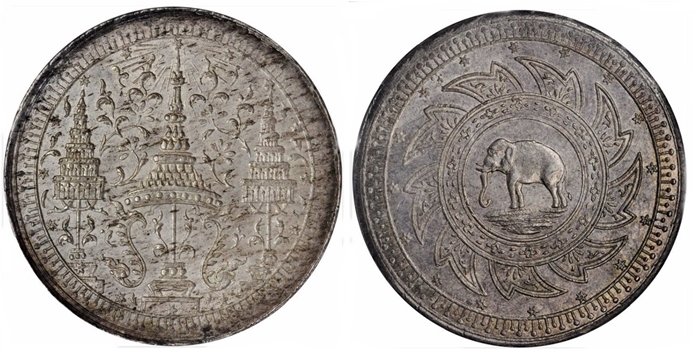
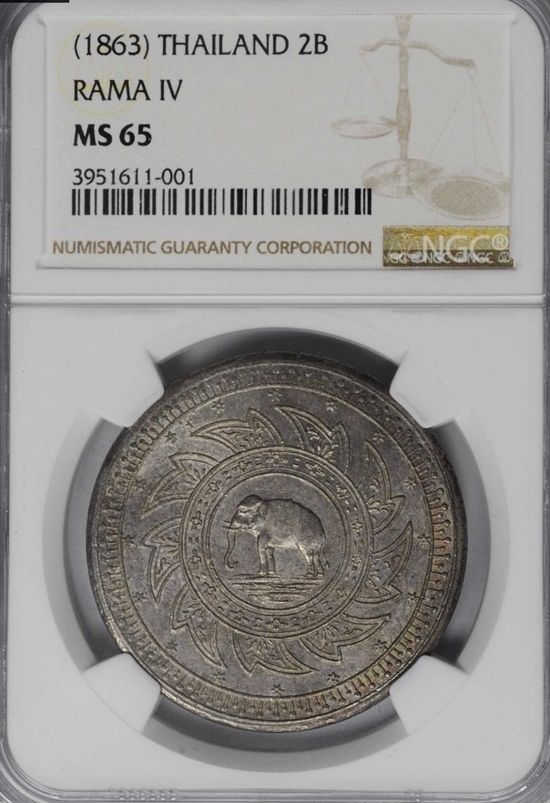
The 2 Baht Silver Crown, ND (1863) produced during the reign of King Mongkut, Rama IV, is not very rare, but very popular. Not only because of the nice design, but also because for years it was the only crown sized Thai coin and therefore collected internationally. In the sale there were several pieces, the most expensive was graded by NGC to be MS65 and sold for US$14,400. This was lower than expected because of the high grade, but as the coin had carbonized dots on the obverse, not remarked by the grading company, it was sold for the reserve price. These carbonized dots can get bigger in the future. The spots could have been caused by planchet imperfections prior to striking the coin or improper storage. These spots are very difficult or impossible to remove.
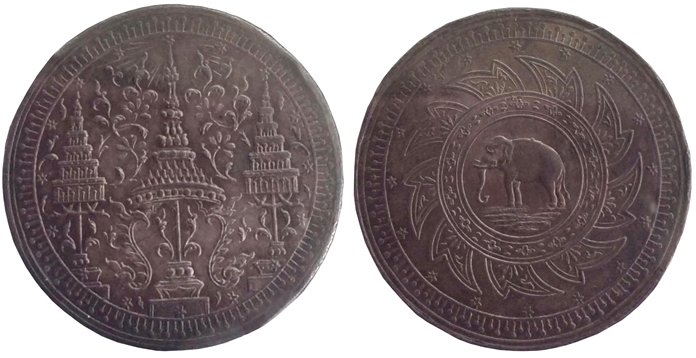
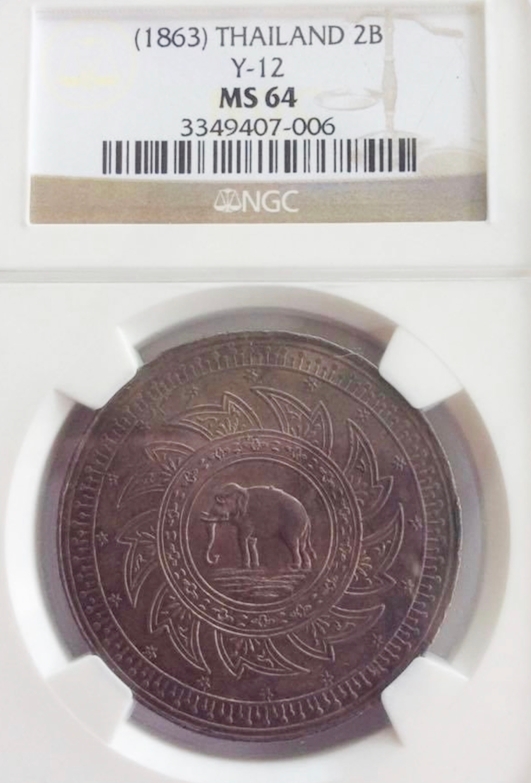
In May last year Stack’s Bowers sold a 2 Baht ND (1863), also graded by NGC and to be MS64, a lower grade than the one sold this year. The coin in the lower grade sold for US$16,800 last year. This coin has a very nice natural patina, which is appreciated by many collectors. The famous American collector Virgil Brand was known to have collected coins with natural patina only.
In the sale this month the most reasonable 2 Baht ND (1863) was sold for US$2,100 graded by NGC as UNC Details – Stained.
Director of Asian Operations Stack’s Bowers, Nirat Lertchitvikul, was impressed that twelve of the Chinese coins in the auction were sold for more than US$100,000.
 |
 |
 |




